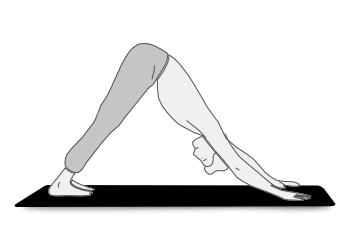
Here’s the truth: watching what you eat can feel like a full-time job. And one that you don't particularly enjoy. We've all heard about “crash diets” designed to help you drop weight quickly. Of course, the name is fitting, considering most diets end up crashing and burning. A more reliable path to success is a plan that's realistic and able to be maintained.
This is where counting macronutrients, or “macros,” offers some relief. In recent years, this approach to eating (also called IIFYM, or “if it fits your macros”) has taken the fitness world by storm. A much more flexible way of thinking about nutrition, it turns old-school, calorie-based dieting on its head by focusing instead on the amount of protein, carbohydrates and fats making up those calories.
So what are macronutrients, exactly? Simply put, they're dietary components that give us energy—the body uses them in relatively large amounts, says Stella Volpe, Ph.D., chair of nutrition sciences at Drexel University in Philadelphia. They encompass the three categories of nutrients you eat the most: protein, carbohydrates and fats. Each type provides a certain amount of energy per gram, expressed in calories.
There are a lot of foods that contain all of these macronutrients, but most skew heavily toward one or two of them. For instance, meat is packed with protein, oatmeal is mostly carbohydrates, and olive oil is predominantly fat. Your body needs all three in some capacity to perform its daily functions.
Advertisement
According to an IIFYM eating plan, if you stick to your daily macro goals, you'll automatically consume fewer calories, which can lead to weight loss and muscle gain. That's not possible when you're depriving yourself on a crash diet. What's more, you can basically eat anything you want and still lose weight without having to constantly count calories.
But there is some math involved. To start counting macros, you'll need to estimate your target macronutrient ratio—that's the breakdown of your daily calories that will come from carbs, protein and fat. Think of it like a personalized pie chart that takes into account your body's energy needs for your activity levels, your long-term weight goals, and your overall health.
Once you have your ratio (for example, an active 35 year old man that is looking to lean down and tone up should have a macro ratio of 40% carbs / 40% protein / 20% fats), you can start tracking your food intake to ensure you're staying within your daily allotment of each macro. It will, of course, vary depending on your personal needs. For example, if you're an athlete or in training, your diet should weigh more heavily towards carbohydrates, says Volpe. Then comes the work of scouring nutrition labels for the big three: carbohydrates, proteins and fats.
Advertisement
This is where meal planning can come in handy to be sure you know what exactly you're eating each day. Some bodybuilders will get exact—measuring out foods and weighing them on a scale. But a more causal approach is to simply pay attention to nutrition labels and portion sizes. One of the more popular meal-tracking apps, MyFitnessPal, has more than a million foods in its database complete with calorie and macro information. That makes quick work of tracking your daily foods.
Best of all, since it's such a flexible plan, you don't have to do it forever. It takes a minimal amount of effort, so you can easily jump back into counting macros whenever you feel you might benefit from it.
FYI
BodyBuilding.com has a macro calculator that can help you determine your daily targets for three goals: Weight loss, weight gain and overall health maintenance.
Advertisement


































